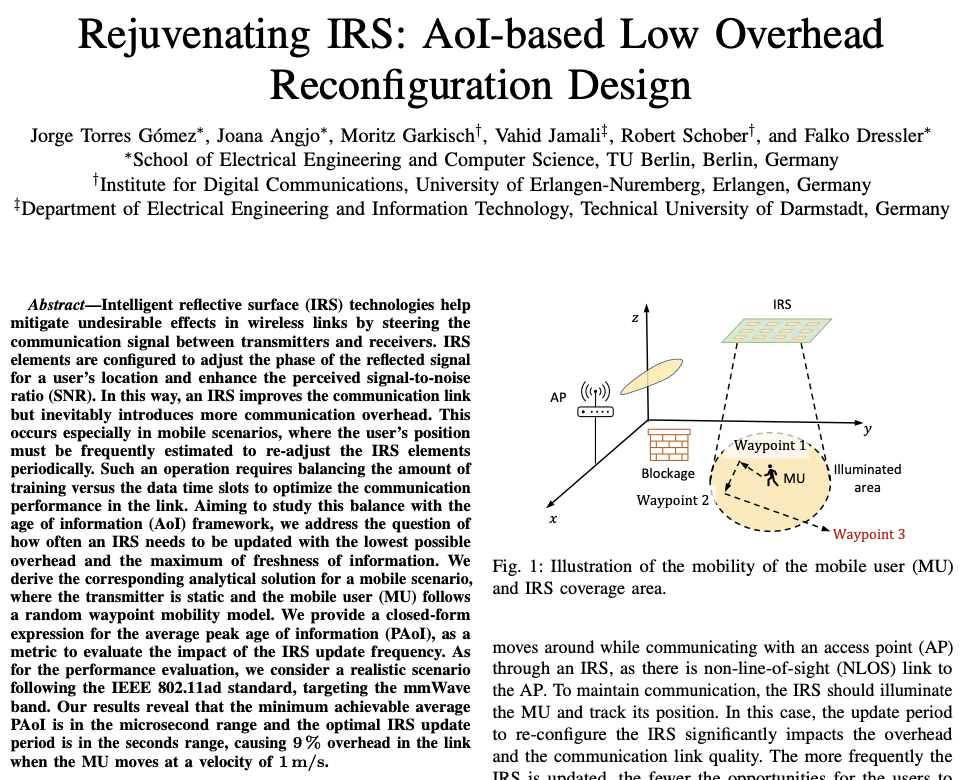Literature Database Entry
segata2013novel
Michele Segata, "Novel Communication Strategies for Platooning and their Simulative Performance Analysis," Proceedings of 1st GI/ITG KuVS Fachgespräch Inter-Vehicle Communication (FG-IVC 2013), Innsbruck, Austria, February 2013.
Abstract
Platooning, the act of a car autonomously following its leaders to form a road train, is a hot topic in research. It has the potential to improve traffic flow on freeways, improve safety, and enhance the driving experience. A lot of effort has been put in several projects in order to implement and test systems capable of performing close car following. While the problems related to control theory seems to be solved, some questions regarding communication are still open. Wireless networking is fundamental for this application, as it is needed to manage and maintain the platoons and, clearly, has strict requirements in terms of frequency update and delay constraints. This paper surveys the literature about platooning systems and related research, identifies some open challenges, presents a simulation framework which can be used to tackle them, and outlines promising approaches.
Quick access
Authors' Version ![]() (PDF on this web site)
(PDF on this web site)
BibTeX ![]()
Contact
BibTeX reference
@inproceedings{segata2013novel,
author = {Segata, Michele},
title = {{Novel Communication Strategies for Platooning and their Simulative Performance Analysis}},
address = {Innsbruck, Austria},
booktitle = {1st GI/ITG KuVS Fachgespr{\"{a}}ch Inter-Vehicle Communication (FG-IVC 2013)},
month = {2},
year = {2013},
}
Copyright notice
Links to final or draft versions of papers are presented here to ensure timely dissemination of scholarly and technical work. Copyright and all rights therein are retained by authors or by other copyright holders. All persons copying this information are expected to adhere to the terms and constraints invoked by each author's copyright. In most cases, these works may not be reposted or distributed for commercial purposes without the explicit permission of the copyright holder.
The following applies to all papers listed above that have IEEE copyrights: Personal use of this material is permitted. However, permission to reprint/republish this material for advertising or promotional purposes or for creating new collective works for resale or redistribution to servers or lists, or to reuse any copyrighted component of this work in other works must be obtained from the IEEE.
The following applies to all papers listed above that are in submission to IEEE conference/workshop proceedings or journals: This work has been submitted to the IEEE for possible publication. Copyright may be transferred without notice, after which this version may no longer be accessible.
The following applies to all papers listed above that have ACM copyrights: ACM COPYRIGHT NOTICE. Permission to make digital or hard copies of part or all of this work for personal or classroom use is granted without fee provided that copies are not made or distributed for profit or commercial advantage and that copies bear this notice and the full citation on the first page. Copyrights for components of this work owned by others than ACM must be honored. Abstracting with credit is permitted. To copy otherwise, to republish, to post on servers, or to redistribute to lists, requires prior specific permission and/or a fee. Request permissions from Publications Dept., ACM, Inc., fax +1 (212) 869-0481, or permissions@acm.org.
The following applies to all SpringerLink papers listed above that have Springer Science+Business Media copyrights: The original publication is available at www.springerlink.com.
This page was automatically generated using BibDB and bib2web.







